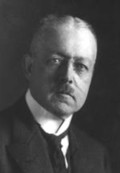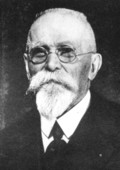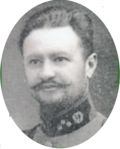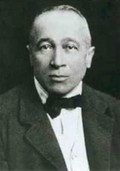
Heinrich Ernst Albers-Schönberg
Internist, Radiologist
* 21. Januar 1865 in Hamburg, Germany
† 4. Juni 1921 in Hamburg, Germany
Albers-Schoenberg was the Nestor of German Roentgenology. He was among the first scientists to explore the clinical possibilities of x-rays. Albers-Schonberg was appointed the first professor of radiolgy in Germany in 1919. He co-founded the still existing journal “Fortschritte auf dem Gebiet der Röntgenstrahlen“ in 1897 and was the initiator and co-founder of the Deutsche Röntgengesellschaft in 1905.
more

Antoine Béclère
Virologist, Immunologist,
* March 17, 1856 Paris, France
† 1939, France
Béclère was a pioneer in radiology in France. In 1897 he created the first laboratory of radiology in Paris.

Etienne Henrard
Military radiologist
* 1870, Belgium
† 1940, Belgium
Henrard was undoubtedly the most important Belgian. Besides his clinical radiological activities, he quickly became interested in stereoradiography and in the removal of foreign bodies, which earned him an international fame. He was a fellow Founding Member of the «Societé Belge de Radiologie» and the «Journal Belge de Radiologie», of which he was the Secretary (1909-1912), Vice-President (1913-1914), President (1919-1920), Editor-in Chief (1924-1940), and finally Treasurer (1932-1940).

Charles Thurstan Holland
Surgeon, Radiologist
* March 1863 at Bridgwater, Somerset, United Kingdom
† 16 January 1941 in Liverpool, United Kingdom
When the properties of X-rays were first demonstrated, Thurston Holland at once recognised their importance in medical diagnosis and surgical treatment. From 1896 to 1904 he was honorary radiologist to the Royal Liverpool Hospital, and from 1904 to 1923 to the Royal Infirmary in Liverpool.

Guido Holzknecht
Radiologist
* December 3th., 1872, Vienna, Austria
† October 30th., 1931, Vienna, Austria
Holzknecht became in 1905 director of the X-ray laboratory at Vienna General Hospital. He later extablished a central radiology department at the hospital, which became known as the “Guido Holzknecht Institute”. With radiologist Robert Kienböck (1871-1953), he was co-founder of the Wiener Röntgengesellschaft (Vienna Radiology Society). In 1902 devised a dosimeter called a “chromoradiometer”. Like a number of other physicians in the early days of radiology, he died from the consequences of radiation damage. The retro-cardiac space is also known as the Holzknecht’s space.

Robert Kienböck
Radiologist
* January 11th., 1871, Vienna, Austria
† Sepember 8th., 1953, Vienna, Austria
Kienböck was a pioneer in the use of x-ray technology for medical diagnosis and therapy. He specialized in research of skeletal diseases and treatment through radiology. In 1910 he described a disorder which consisted of breakdown of the lunate bone in the wrist. He called the disorder lunatomalacia, which is now known as Kienböck’s disease. He was co-founder with Guido Holzknecht of the Wiener Röntgengesellschaft (Vienna Radiology Society).
